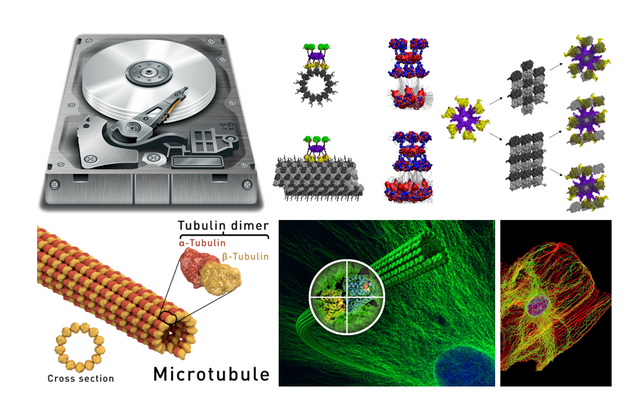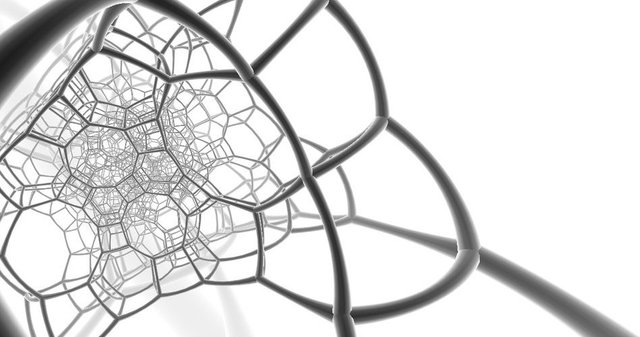CAMKII is a protein that has been associated with long term memory since the 80s[1, 2], seen for example in how genetic deletion of CAMKII impairs long term memory.[3] Recent work from Craddock, Tuszynski, and Hameroff shows how CAMKII forms long term memory through writing data to microtubules, 6 bit per CAMKII - MT interaction.[4] This connection between CAMKII and microtubules means that microtubules-as-computers[5, 6] are now where DNA was in the 1950s when Watson and Crick began to describe the double helix structure and the code, A, T, C, G.

With the "spiraeum"[7], microtubule networks as a single integrated system, an organelle that provides cognition to the cell, there is a molecular foundation for a new information level in the cell, that can explain spiritual phenomena, Rupert Sheldrake's notion of morphic fields, and similar ideas that have deep roots in cultural tradition but are yet to be pin-pointed to a specific biological structure.
BitLattice's proof-of-structure through reference homogenic fields
Vitalik Buterin who disrupted the blockchain industry in 2013 by inventing a turing-complete blockchain, a general-purpose world computer that integrated every single application-specific blockchain that preceded it, published a paper under R3 in 2016 titled Chain interoperability, part of a broader trend of trying to somehow scale distributed ledgers by making them somehow interoperate.
"We believe a future of multiple co-existing blockchains is inevitable. Not one chain to rule them all, but an ecosystem of diverse blockchains all serving their own purpose." - Björn Wagner, Polkadot
With the BitLattice system, Hibryda is disrupting every single one of those ideas, and does so by using reference homogenic fields to verify the integrity of a state that is unprecedented in size, via input from local shards using wave functions of mathematical proofs from cumulative states of nodes.
The "authority entities" base their decision based on the current state of surrounding space, described by a function that is unique to certain space layout and dampened accordingly to metric distance from the entity. The entities calculate a precedence state, a number defining future transaction wave function, a chunk of space it sits in, and take care of proper spatial allocation, to make easy sharding possible. - Hibryda, 2018
BitLattice as a "lattice computer" is using homogenic fields to maintain cohesion between a vast network of shards, in a way that is similar to the idea that microtubule networks in cells, as "lattice computers", use morphic fields from analog wave functions.

References
The role of CaMKII binding NMDARs in synaptic plasticity and memory (2010)
Cytoskeletal Signaling: Is Memory Encoded in Microtubule Lattices by CaMKII Phosphorylation? (2012)
Signaling to the microtubule cytoskeleton: an unconventional role for CaMKII (2015)
Microtubules: Possible Application to Computer Technologies (1989)
Very complex ideas bro.
dunnot know if this seam is probable or correct, but I like the audacious steam you put in your inquire:) On the other hand, my intuition tell me that maybe the graphic topology (2-3D imagery you show) is nothing but expresions of a far larger structure of meaning we cannot reach or imagine just yet. Or something like that:) PD. Thanks for the work
Downvoting a post can decrease pending rewards and make it less visible. Common reasons:
Submit